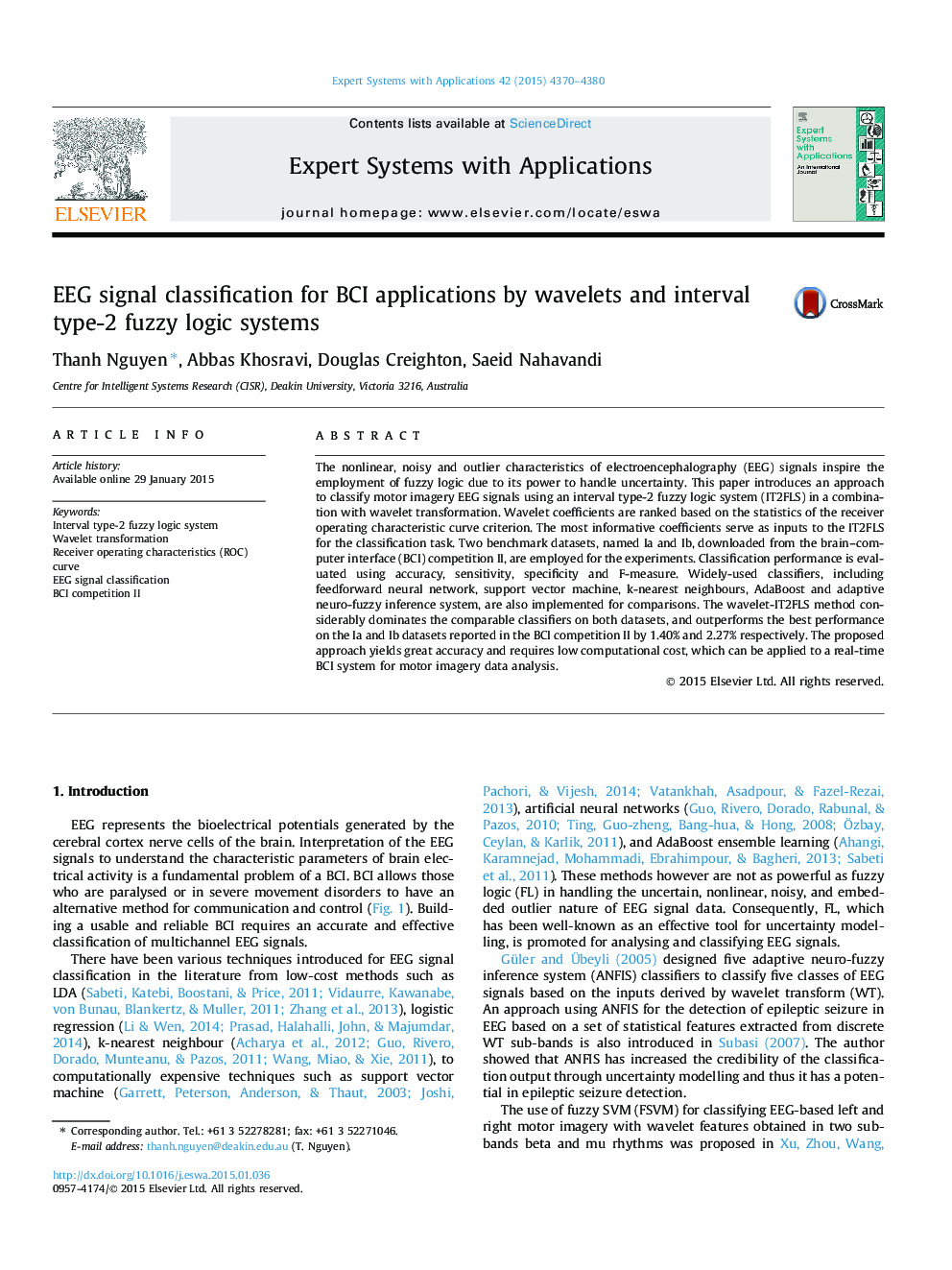| Article ID | Journal | Published Year | Pages | File Type |
|---|---|---|---|---|
| 385463 | Expert Systems with Applications | 2015 | 11 Pages |
•Propose Haar wavelet transformation and ROC curve for EEG signal feature extraction.•Combine wavelets and interval type-2 fuzzy logic system for EEG signal classification.•Benchmark datasets downloaded from the BCI competition II are used for experiments.•Proposed wavelet-IT2FLS outperforms the winner methods of the BCI competition II.•IT2FLS dominates competing classifiers: FFNN, SVM, kNN, AdaBoost and ANFIS.
The nonlinear, noisy and outlier characteristics of electroencephalography (EEG) signals inspire the employment of fuzzy logic due to its power to handle uncertainty. This paper introduces an approach to classify motor imagery EEG signals using an interval type-2 fuzzy logic system (IT2FLS) in a combination with wavelet transformation. Wavelet coefficients are ranked based on the statistics of the receiver operating characteristic curve criterion. The most informative coefficients serve as inputs to the IT2FLS for the classification task. Two benchmark datasets, named Ia and Ib, downloaded from the brain–computer interface (BCI) competition II, are employed for the experiments. Classification performance is evaluated using accuracy, sensitivity, specificity and F-measure. Widely-used classifiers, including feedforward neural network, support vector machine, k-nearest neighbours, AdaBoost and adaptive neuro-fuzzy inference system, are also implemented for comparisons. The wavelet-IT2FLS method considerably dominates the comparable classifiers on both datasets, and outperforms the best performance on the Ia and Ib datasets reported in the BCI competition II by 1.40% and 2.27% respectively. The proposed approach yields great accuracy and requires low computational cost, which can be applied to a real-time BCI system for motor imagery data analysis.
